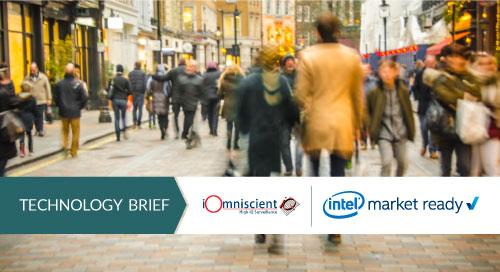For Systems Integrators, a New Vision of Smart Cities

Safety, efficiency, and equality: all are all top priorities for modern cities. What is the right role for computer vision in meeting these goals, and how can systems integrators help cities upgrade their infrastructure with the latest technology?
Let’s start with the obvious: Simply installing thousands of cameras across a city is not enough. Even with heavily staffed command-and-control centers, there are too many streams to be viewed by safety personnel, and too much data to analyze for immediate action. AI can ease the load, but concerns about civil liberties complicate matters.
The solution is to move machine to the edge. Here, AI can analyze events as they happen, helping first responders act fast to stem crime, emergencies, traffic problems, and more. What’s more, there is no need to send personally identifying information to the command center until action is required, which helps protect privacy.
Even better, high-performance edge devices can add intelligence and functionality to existing systems, and offer multi-sensory awareness of sounds, smells, and other environmental factors—a boon for systems integrators (SIs) and their city planning customers.
SIs who understand the importance of AI and actionable insights for smart cities—and know which technology solutions can best deliver them—will stay ahead of the competition. And for those who need help with either piece, solutions aggregators have the expertise, resources, and supplier connections they need.
Combining AI and Multi-Sensory Analysis
iOmniscient Corporation is leading the charge towards this new approach. Its IQ Smart City Solution goes beyond basic computer vision with its patented automated-response capability. Acting simultaneously on diverse data, the system analyzes the moment when an incident occurs, automatically locates the nearest appropriate responder, and directs rapid action.
Here’s one example of how the solution can automatically carry out a chain of events: A car accident is detected by the system’s Traffic Management capability. The system notes that the vehicle is also on fire. The nearest police vehicle is located and informed about the accident with a video of the event and detailed information on the location.
The nearest fire brigade and ambulance are also informed. Cities using this system have been able to reduce response times for such incidents decreased from an average 25 minutes to less than 5.
The heart of the system is a broad set of AI-based software building blocks, combined to provide safety solutions for specific applications.
The solution can understand the behavior of vehicles and people while protecting privacy. What’s more, the recognition system can provide accurate results with minimal resolution, even in crowded scenarios. “Traditional solutions require somewhere between 60 to 100 pixels,” said Ivy Li, co-founder and Managing Director of iOmniscient, “but our algorithms can achieve high accuracy with as low as 12 to 22 pixels.”
The solution combines rules-based heuristics with deep learning algorithms, based on what’s most suitable for the environment.
“Deep learning can be very accurate, but it has disadvantages. You have to do the learning and that takes a lot of compute power and time,” explained Dr. Rustom Kanga. “While heuristics is a very light computing process that operates like a human thinks. We use our own blend of these and other techniques to generate accurate and cost-effective results.”
Analytics at the Edge and in the Cloud
The software can operate in either a centralized, distributed, or hybrid architecture as shown in Figure 1.

Geared to meet the requirements of multiple stakeholders, reporting can also be centralized or decentralized. For example, a police officer on the street may need specific, actionable information—while operational personnel require a system-wide view.
“We empower reporting by converting the sensor data into text on a real-time basis,” said Dr. Kanga. “For example, we may capture images of a man in a blue shirt placing a package under a bench and then walking away. The system translates and converts each of these activities into a text format. Once in text, it can be analyzed in any big data engine.”
Based on Intel® technology, the system can turn any IP camera into an intelligent one that analyzes video at the edge.
Intel is a key part of the solution architecture—from a NUC located at the camera, to a high-powered server in the cloud. “We use Intel processors because they have very good core technology, which is upward and downward compatible, reliable, robust, and scalable,” said Dr. Kanga. “And among other tools, we use the Intel® OpenVINO™ Toolkit for deep learning.”
Municipal planners, first responders, and safety managers recognize the need for more effective ways to protect people, places, and things. Companies like iOmniscient are bringing innovative IoT and AI technologies to market worldwide.
The result when SIs deploy them for their city planning customers? Real-time incident detection and timely response and resolution for the customer. And repeat business for SIs.